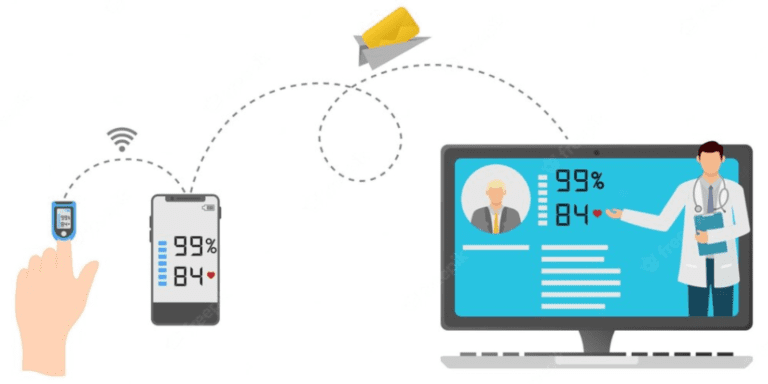“True prevention is not waiting for bad things to happen, it’s preventing things from happening in the first place.” Diagnosis in today’s world is much more powerful than it was ever before, and the reason behind is the meaningful data that these advanced diagnostic tools are powered by. As we know, data collection and monitoring are key activities in healthcare. Healthcare professionals are accustomed to using a wide range of databases in a variety of independent settings such as clinical laboratories, point-of-care, etc. However, the overwhelming volume of data produced by these systems comes from a range of sources and formats, which arises data integrity and quality issues. To address these issues, the application of Digital Diagnostics (DDx) in such settings is becoming more and more viable.
“If I had an hour to solve a problem, I’d spend 55 minutes thinking about the problem and five minutes thinking about solutions.” — Albert Einstein. DDx intends to do just that. These technologies provide anatomical and physiological data, primary indicators, biomarkers, patterns, and information that provide cues about a disease in a very comprehensive way. These tools enable early detection, risk prediction, and effective screening of diseased states. They assist Physicians by providing output (achieved via collection, presentation, and interpretation of patient data) which helps them better diagnose any prevailing condition.
The key drivers of DDx are the technology advancements like cloud computing and new business models such as Software as a Service (SaaS). Adding to these, instrument-agnostic software that is accessible through many devices including mobile devices further enhances the value of DDx. DDx will continue to be fueled and accelerated by developments in cloud computing, Machine Learning (ML), and Artificial Intelligence (AI).
One may also think of Software as a Medical Device (SaMD) when referring to a digital diagnostic device. The pace at which such diagnostic tools are developed surely demands an extensive at-par regulatory framework.
Considerations involved in the regulatory framework

There are multiple considerations involved in the DDx regulatory framework. DDx, which is employed as a component of a wider clinical workflow, is achieved by combining various products such as patient monitoring or elements like disease diagnostics with software and/or mobile applications. This signifies that even a minor flaw in DDx’s functionality, usability, or design, potentially results in incorrect decisions that would impact the way patients are treated.
Software updates and revisions, which are crucial in the creation of any software product, are perhaps factors that must be taken into account while complying with the regulations. A simple algorithm update, the inclusion of additional features, or the addition of design elements can interfere with the operation and have a bigger influence on a DDx’soutput.
Most regulatory bodies, including the FDA, now have endorsed the necessity of creating an effective regulatory framework that takes these crucial factors into account. An important step towards developing a framework and process for precertification and, ultimately, speeding up the path to market for digital health innovations is FDA’s Digital Health Software Precertification Pilot Programme.
Current regulatory framework

Several DDx is regulated under the SaMD category of regulations. The actual definition of medical software serves as the basis for SaMD classification. The International Medical Device Regulators Forum (IMDRF) provides the following recommendations on how to establish a SaMD definition statement:
- The intended purpose of software (treat or diagnose, drive, or inform clinical management),
- The severity of the situation or condition SaMD is intended for (critical, serious, non-serious),
- A description of critical features of SaMD.
Based on the definition stated above, SaMD can be divided into four categories (I, II, III, or IV). From category I, which has the least impact, to category IV, which has the highest impact on patient’s health as shown in the table below.

While the regulators continue to work on the applicable regulatory framework for these devices, there continue to be several challenges from the technological and clinical perspective that need to be worked upon. Some of these are:
- Software may respond differently on different platforms
- Software/App is often installed by the end-user (who may be untrained)
- The software can be copied and distributed illegally
- Version updates that need to be installed often
- False positive and false negative issues
DDx can certainly provide real value for a lot of Clinicians and Healthcare Professionals. However, the technological, clinical, and functionality issues need to be continually addressed in parallel to a better defined and monitored regulatory framework to build the confidence of safety and efficacy offered by them, to allow wide acceptance of these tools and their effective integration into the healthcare practices.
Worried about getting your DDx to the market? Elexes is here to help you out!
It is important to take into account the applicable guidance, standards, and regulations and comply with these requirements to bring down the risks associated and also to reduce the number of future adverse events related to these devices. Elexes has a team of regulatory professionals who have helped numerous medical device companies enter various markets in different countries. Feel free to contact jennifer@elexes.com, we will be happy to assist you!
#elexes #healthcare #digitaldiagnostics #digitaltherapeutic #clinicians #medicaldevice #software #samd #pilot





















